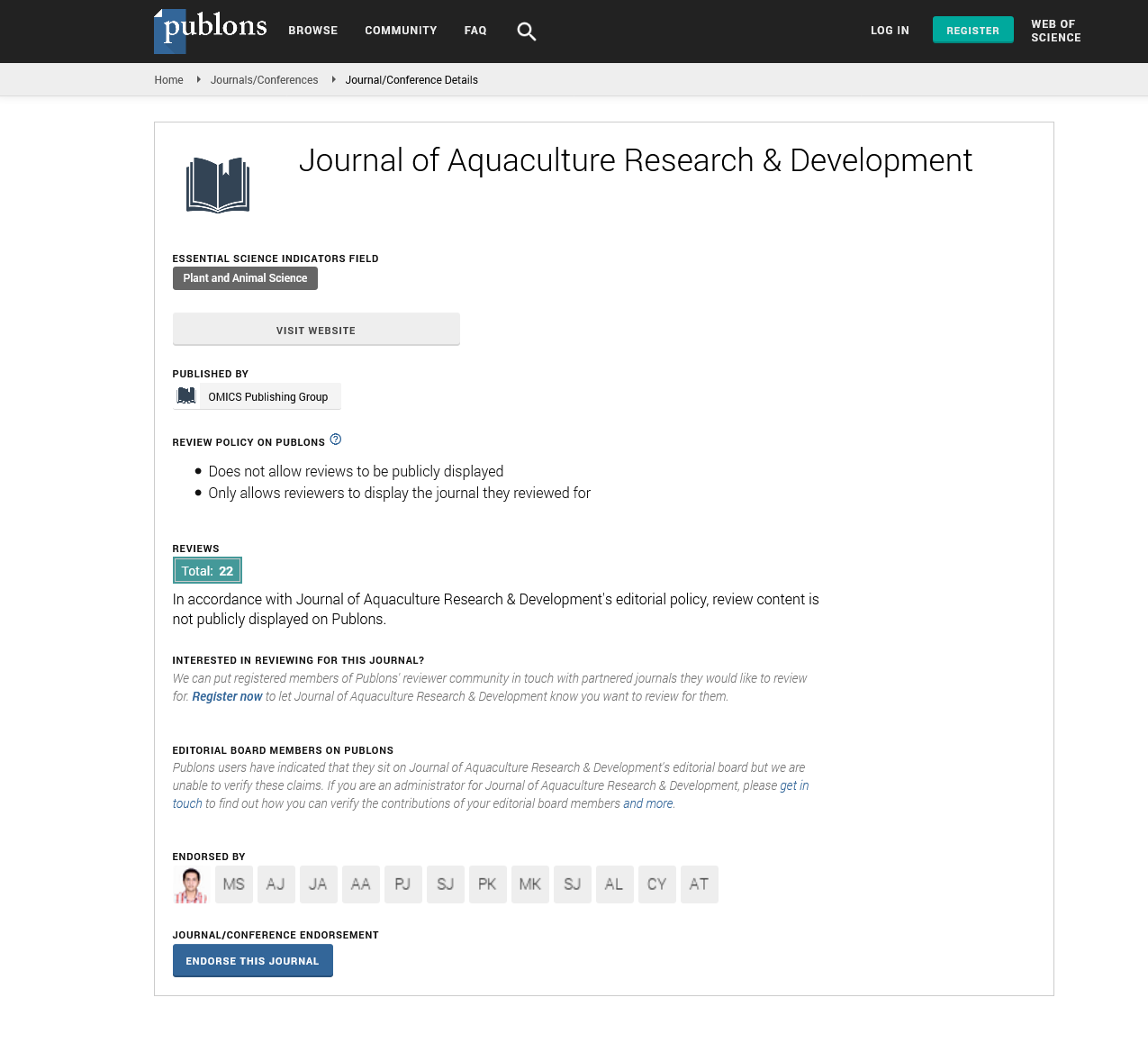Indexed In
- Online Access to Research in the Environment (OARE)
- Open J Gate
- Genamics JournalSeek
- JournalTOCs
- Scimago
- Ulrich's Periodicals Directory
- Access to Global Online Research in Agriculture (AGORA)
- Electronic Journals Library
- Centre for Agriculture and Biosciences International (CABI)
- RefSeek
- Directory of Research Journal Indexing (DRJI)
- Hamdard University
- EBSCO A-Z
- OCLC- WorldCat
- Scholarsteer
- SWB online catalog
- Virtual Library of Biology (vifabio)
- Publons
- MIAR
- University Grants Commission
- Euro Pub
- Google Scholar
Useful Links
Share This Page
Journal Flyer

Open Access Journals
- Agri and Aquaculture
- Biochemistry
- Bioinformatics & Systems Biology
- Business & Management
- Chemistry
- Clinical Sciences
- Engineering
- Food & Nutrition
- General Science
- Genetics & Molecular Biology
- Immunology & Microbiology
- Medical Sciences
- Neuroscience & Psychology
- Nursing & Health Care
- Pharmaceutical Sciences
Commentary - (2025) Volume 16, Issue 1
Advancing Aquaculture Sustainability through Fish School Swimming Simulations
Hannah Pearl*Received: 01-Jan-2025, Manuscript No. JARD-25-28648; Editor assigned: 03-Jan-2025, Pre QC No. JARD-25-28648 (PQ); Reviewed: 17-Jan-2025, QC No. JARD-25-28648; Revised: 24-Jan-2025, Manuscript No. JARD-25-28648 (R); Published: 31-Jan-2025, DOI: 10.35248/2155-9546.25.16.955
Description
The rapid advancement of Recirculating Aquaculture Systems (RAS) has revolutionized the fish farming industry by offering efficient, sustainable and controlled environments for aquaculture production. Among the various innovations in RAS, the application of fish school swimming models has emerged as a significant development. These models simulate the collective swimming behavior of fish schools, providing valuable insights into fish movement patterns, space utilization and the impact of water flow dynamics on fish welfare. The integration of fish school swimming models into RAS design and management holds the potential to enhance fish health, improve production efficiency and optimize the overall sustainability of aquaculture operations.
Fish school swimming models are computational simulations based on principles of fluid dynamics, fish biomechanics and behavioral ecology. They are designed to replicate how fish schools respond to external stimuli, such as water flow velocity, tank shape and environmental changes. These models consider factors such as individual fish swimming capabilities, schooling tendencies and hydrodynamic interactions within the group. By accurately representing fish movement patterns, the models enable aquaculture engineers and researchers to optimize the layout and design of RAS facilities.
One of the primary benefits of applying fish school swimming models in RAS is the ability to optimize water flow patterns. In RAS, water circulation is essential for maintaining oxygen levels, removing waste and ensuring consistent water quality. However, improper flow dynamics can lead to stagnant areas, localized oxygen depletion and uneven waste distribution, which can compromise fish welfare. Swimming models help identify flow inconsistencies and guide the placement of water inlets, outlets and aerators to create uniform and laminar flow patterns. This ensures that fish experience consistent water quality throughout the tank, reducing stress and promoting healthier growth.
Moreover, fish school swimming models offer insights into space utilization and stocking density optimization. In aquaculture, maintaining an appropriate stocking density is crucial for preventing stress and ensuring efficient resource use. By simulating how fish schools interact with the tank environment, these models allow aquaculturists to determine the optimal number of fish per unit volume. They can also predict how different stocking densities influence schooling behavior, feeding efficiency and overall welfare. This data-driven approach enables farmers to maximize production while safeguarding fish health and minimizing the risk of overcrowding-related issues, such as aggression and disease outbreaks.
The application of fish school swimming models also enhances fish welfare by promoting natural swimming behaviors. In RAS, fish movement is influenced by water current patterns, which can either promote or hinder their natural swimming tendencies. Swimming models allow aquaculture engineers to design tanks that replicate the hydrodynamic conditions of fish species' natural habitats. For example, certain species, such as salmon and trout, prefer moderate flow conditions that promote continuous swimming, which strengthens their muscles and improves their overall fitness. By replicating these conditions, RAS facilities can promote healthier and more active fish, resulting in better growth rates and improved meat quality.
Another key application of fish school swimming models in RAS is the development of feeding strategies. Feeding efficiency is a critical factor in aquaculture profitability, as excessive or uneven feed distribution leads to waste and deteriorates water quality. Swimming models simulate fish movement patterns during feeding, enabling aquaculturists to determine the optimal locations for feed dispensers and the most effective feeding schedules. This ensures that feed is evenly distributed reducing competition among fish and minimizing feed wastage. The result is improved Feed Conversion Ratios (FCR) and lower production costs.
In conclusion, the application of fish school swimming models in recirculating aquaculture systems represents a significant advancement in aquaculture technology. By providing valuable insights into fish behavior, water flow optimization and welfare management, these models contribute to more efficient, sustainable and productive RAS operations. As aquaculture continues to embrace data-driven technologies, the integration of fish school swimming models will play a vital role in shaping the future of sustainable fish farming, improving both economic viability and environmental stewardship.
Citation: Pearl H (2025). Advancing Aquaculture Sustainability through Fish School Swimming Simulations. J Aquac Res Dev. 16:955.
Copyright: © 2025 Pearl H. This is an open access article distributed under the terms of the Creative Commons Attribution License, which permits unrestricted use, distribution, and reproduction in any medium, provided the original author and source are credited.

